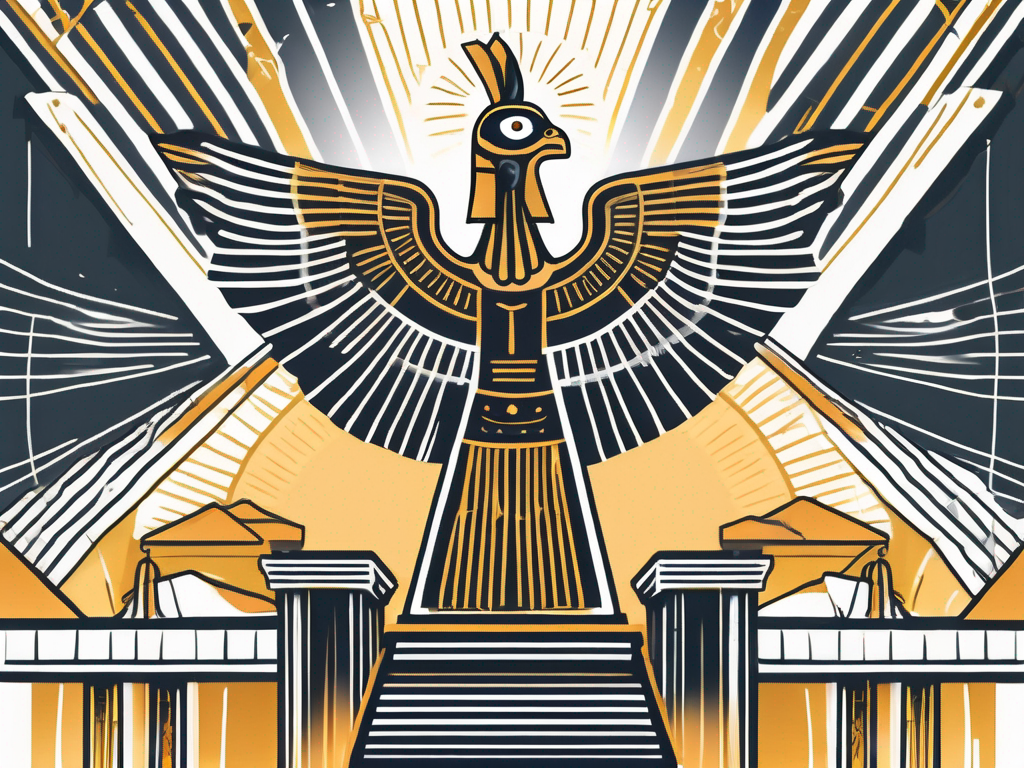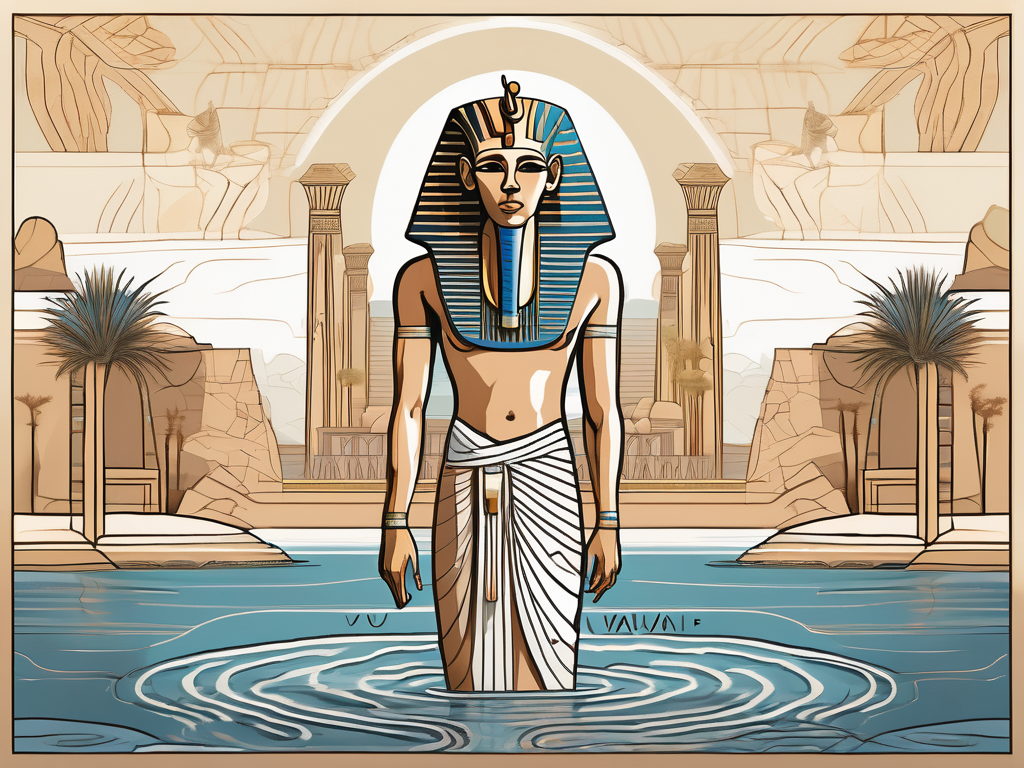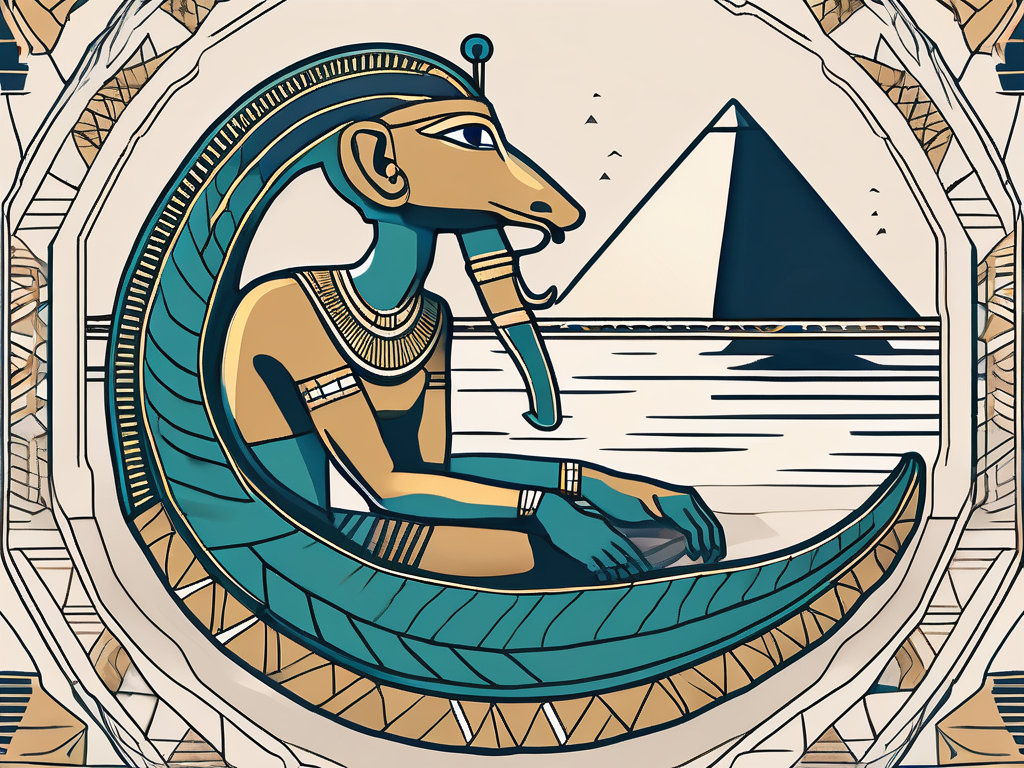Welcome to a fascinating journey into the ancient world of Egyptian mythology. In this article, we will delve into the enigmatic deity known as Nekheny, exploring the historical context, symbolism, worship, and influence of this captivating god. Prepare to be intrigued as we unveil the mysteries surrounding Nekheny!
Understanding the Historical Context of Nekheny
Before we can fully comprehend the significance of Nekheny, it’s essential to understand the historical context in which this deity emerged. Nekheny was a prominent god in ancient Egyptian society, worshiped primarily during the Old Kingdom. This period marked the rise of the pharaohs and the establishment of ancient Egyptian civilization.
During this time, Nekheny played a crucial role in the religious and political landscape. He was associated with kingship, protection, and the essence of divine power. Nekheny symbolized the strength and authority of the pharaohs, making him a revered figure in Egyptian society.
But what led to the emergence of Nekheny as such a significant deity? The answer lies in the historical events that shaped ancient Egypt during the Old Kingdom. It was a time of great societal transformation, as the pharaohs consolidated their power and established a centralized government.
With the rise of the pharaohs came the need for a god who could embody their authority and protect their reign. Nekheny, with his association with kingship and divine power, perfectly fulfilled this role. He became the divine counterpart to the pharaohs, representing their strength and legitimacy.
The Role of Nekheny in Ancient Egyptian Society
Nekheny’s influence extended beyond his association with kingship and divine power. He was also considered a guardian deity, protecting the pharaoh and the people of Egypt from harm and evil. Nekheny ensured the prosperity and stability of the kingdom, safeguarding its inhabitants.
But how did Nekheny fulfill this role as a protector? It was believed that he possessed the ability to ward off malevolent forces and bring good fortune to the kingdom. His presence was seen as a shield against chaos and a beacon of hope for the people.
As a god of warfare, Nekheny embodied courage and ferocity. Warriors would seek his favor before battle, believing his divine strength would grant them victory. His presence on the battlefield was seen as a symbol of protection and inspiration.
But Nekheny’s role as a protector extended beyond the physical realm. He was also believed to guide and protect the souls of the deceased. It was believed that Nekheny would accompany the souls of the departed on their journey to the afterlife, ensuring their safe passage and providing them with divine guidance.
Nekheny’s Place in the Egyptian Pantheon
Within the vast Egyptian pantheon, Nekheny held a unique place. He was closely associated with Horus, one of the most important gods in ancient Egyptian mythology. The falcon-headed Nekheny was often depicted as the embodiment of Horus’ physical strength and martial prowess.
This association with Horus elevated Nekheny’s status and further solidified his role as a protector and guide. Horus, as the divine son of Osiris and Isis, represented the rightful heir to the throne and the embodiment of divine kingship. By aligning Nekheny with Horus, the ancient Egyptians emphasized Nekheny’s connection to the pharaohs and his role in upholding their authority.
Furthermore, Nekheny was linked to other deities such as Ra and Osiris, further solidifying his importance in the Egyptian pantheon. His associations with these powerful divinities elevated Nekheny’s status and reinforced his role as a protector and guide for both the living and the deceased.
In conclusion, Nekheny’s historical context and role in ancient Egyptian society are crucial to understanding his significance. As a god associated with kingship, protection, and divine power, Nekheny played a vital role in upholding the authority of the pharaohs and ensuring the prosperity and stability of the kingdom. His place in the Egyptian pantheon, closely linked to Horus and other powerful deities, further emphasized his importance as a protector and guide for both the living and the deceased.
The Symbolism and Iconography of Nekheny
The intriguing symbolism and iconography surrounding Nekheny provide further insight into his significance within Egyptian culture. One of the most prominent symbols associated with Nekheny is the falcon, which represents both his divine nature and his association with the sky and air.
The falcon was highly revered in ancient Egypt. Its ability to soar high above the land was seen as a reflection of the gods’ omnipotence. Similarly, Nekheny was believed to possess an all-seeing gaze, watching over the kingdom and its people.
Depictions of Nekheny often portrayed him with outstretched wings, symbolizing his role as a protector and his ability to encompass the entire kingdom under his watchful gaze.
But the symbolism of Nekheny goes beyond the falcon. Another important symbol associated with him is the serpent. In ancient Egyptian mythology, the serpent was often associated with protection and rebirth. It was believed that Nekheny had the power to ward off evil and bring about renewal and transformation.
Furthermore, Nekheny was often depicted wearing a double crown, which symbolized his dual role as the ruler of both Upper and Lower Egypt. This imagery emphasized his authority and his ability to unite the two regions under his divine rule.
The Falcon: Nekheny’s Sacred Animal
The falcon was not only a symbol of Nekheny’s divine nature, but it was also considered his sacred animal. In ancient Egyptian culture, certain animals were associated with specific deities, and the falcon was closely linked to Nekheny.
Ancient Egyptians believed that by honoring and worshiping the falcon, they were paying homage to Nekheny and seeking his protection and guidance. The falcon was often depicted in temple reliefs and statues, serving as a reminder of Nekheny’s presence and power.
Moreover, the falcon’s swift and agile nature was seen as a reflection of Nekheny’s ability to swiftly respond to threats and protect his devotees. This symbolism reinforced the idea that Nekheny was a powerful and vigilant deity who would always come to the aid of those who sought his assistance.
Nekheny’s Iconography in Ancient Art and Architecture
Ancient Egyptian art and architecture provide us with a wealth of information about Nekheny’s iconography. Statues and reliefs often depicted Nekheny wearing the White Crown of Upper Egypt, emphasizing his association with this region and his connection to pharaonic power.
In addition to the White Crown, Nekheny was also sometimes depicted wearing the Red Crown of Lower Egypt, symbolizing his authority over both regions. This dual crown imagery further highlighted Nekheny’s role as a unifying force in Egyptian society.
In temples and shrines dedicated to Nekheny, his image was prominently displayed, serving as a visual representation of his influence. These sacred spaces were designed to invoke a sense of awe and reverence, inviting worshippers to connect with the divine presence of Nekheny.
The walls of these temples often featured intricate carvings and hieroglyphs that depicted Nekheny’s various attributes and accomplishments. These detailed artworks served as a means of educating the worshippers about Nekheny’s role in Egyptian mythology and society.
Furthermore, the architecture of these temples was carefully designed to reflect the grandeur and power associated with Nekheny. Massive columns, elaborate friezes, and towering pylons created a sense of majesty and awe, reinforcing the belief in Nekheny’s divine authority.
Overall, the symbolism and iconography surrounding Nekheny provide a fascinating glimpse into the complex religious and cultural beliefs of ancient Egypt. Through the use of powerful symbols and artistic representations, Nekheny’s significance as a protector, unifier, and divine presence was deeply ingrained in the hearts and minds of the Egyptian people.
The Worship and Rituals of Nekheny
The worship of Nekheny involved elaborate rituals and ceremonies that played a significant role in ancient Egyptian daily life. Temples and shrines were dedicated to his veneration, providing focal points for religious observance and communal gatherings.
The Temples and Shrines Dedicated to Nekheny
One notable temple dedicated to Nekheny is the temple of Nekhen, located in Hierakonpolis, the ancient city after which Nekheny takes its name. The temple complex served as a spiritual center, where rituals were performed and offerings were made to honor Nekheny and seek his blessings.
Worshippers would bring offerings of food, drink, and incense to the altars, in hopes of receiving Nekheny’s favor and guidance. The rituals conducted in these sacred spaces were seen as a way to maintain harmony between the human and divine realms.
The Significance of Nekheny’s Rituals in Daily Life
Nekheny’s rituals were not confined to the confines of the temples. The ancient Egyptians believed that these ceremonies had a direct impact on their daily lives. Through performing these rituals, they sought the protection and blessings of Nekheny, ensuring the well-being and prosperity of the community.
The rituals associated with Nekheny were seen as a way to establish a connection between the divine and mortal realms, strengthening the bond between humans and their gods.
Nekheny’s Influence on Modern Culture and Beliefs
Although ancient Egyptian civilization has long disappeared, the influence of Nekheny can still be felt in modern culture and beliefs.
Nekheny’s Role in Contemporary Paganism
In contemporary paganism, Nekheny remains an object of reverence for those who seek to connect with ancient Egyptian spirituality. Devotees may invoke Nekheny’s protection, wisdom, and guidance, drawing inspiration from the deity’s associations with strength and authority.
Through rituals and practices inspired by ancient Egyptian traditions, modern pagans honor Nekheny’s legacy and seek a deeper understanding of his mysteries.
The Legacy of Nekheny in Popular Culture
Nekheny’s presence extends beyond religious and spiritual contexts. His imagery can be found in various forms of popular culture, from books to movies and video games. Modern interpretations of Nekheny’s mythology further contribute to his enduring legacy and the fascination surrounding this ancient Egyptian deity.
Debunking Myths and Misconceptions about Nekheny
As with any ancient deity, Nekheny’s mythology has been subject to misconceptions and misunderstandings over the centuries. It’s important to separate fact from fiction to gain a clearer understanding of this intriguing god.
Separating Fact from Fiction in Nekheny’s Mythology
One common misconception is that Nekheny is a minor deity overshadowed by other gods in the Egyptian pantheon. However, as we have explored in this article, Nekheny played a significant role in ancient Egyptian society and held unique associations with powerful deities.
By examining ancient texts and artifacts, we can untangle the threads of Nekheny’s mythology, piecing together a more accurate depiction of this fascinating god.
Addressing Common Misunderstandings about Nekheny’s Worship
Another misconception relates to the nature of Nekheny’s worship. While it is true that his veneration was not as widespread as some other gods, this does not diminish his importance or the fervent devotion of his followers.
Nekheny’s worship was deeply rooted in ancient Egyptian society and played a significant role in shaping the religious and cultural landscape of the time.
As we conclude our exploration of Nekheny, we can appreciate the rich tapestry of mythology, symbolism, worship, and legacy that surrounds this enigmatic Egyptian god. Nekheny’s story offers a glimpse into the beliefs and values of ancient Egyptian civilization, allowing us to connect with a bygone era and unravel the mysteries of the past.












